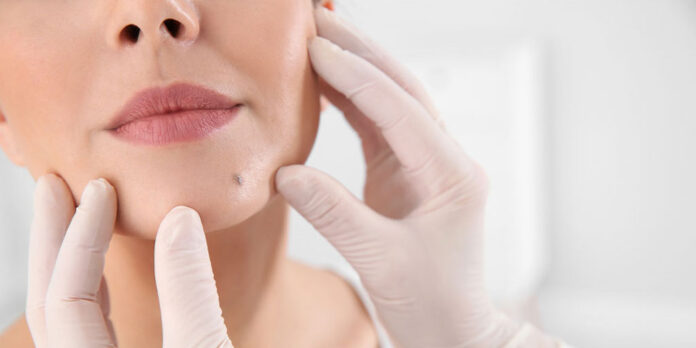Facial moles are common skin growths that can appear in various shapes, sizes, and colors. Most are benign and do not require treatment. However, for cosmetic or medical reasons, some individuals may seek removal. Whether it’s for enhancing appearance or due to health concerns, understanding the safety of mole removal is essential.
Mole removal is a widely performed dermatological procedure, and Mole Removal In Dubai has become increasingly popular due to advancements in cosmetic dermatology and patient awareness.
What Makes Facial Mole Removal Safe?
Facial mole removal is generally safe when conducted by trained professionals using approved techniques. Safety largely depends on the method used, the nature of the mole, and post-procedure care. Non-invasive technologies have made the process less painful and more precise, minimizing scarring and downtime.
Several factors contribute to the safety of mole removal:
Proper Diagnosis
Before any mole is removed, it must be examined to rule out malignancy. Dermatologists often use dermatoscopic evaluation or may recommend a biopsy to ensure the mole is benign.
Suitable Technique
Different techniques are used depending on the mole’s size, depth, and location. Advanced methods such as laser removal or radiofrequency are often used for facial areas to preserve aesthetics.
Common Reasons for Removing Facial Moles
Cosmetic Concerns
Moles on the face can sometimes affect a person’s confidence or self-image. Removing them for cosmetic purposes is a common and safe practice when done correctly.
Changes in Appearance
If a mole changes in color, size, or texture, it might signal a risk of skin cancer. In such cases, removal becomes a preventive measure.
Irritation or Discomfort
Moles located on areas prone to shaving or constant friction may cause irritation. Removal can help prevent inflammation and discomfort.
Techniques Used for Facial Mole Removal
| Method | Ideal For |
|---|---|
| Laser Removal | Small, flat, non-cancerous moles |
| Surgical Excision | Deep or suspicious moles |
| Shave Removal | Raised moles not extending deep into skin |
| Radiofrequency Ablation | Soft moles and precision-based removal |
| Cryotherapy | Freezing small benign moles |
Each method has its own advantages and is chosen based on the mole’s characteristics and the patient’s skin type.
What to Expect During the Procedure
Step-by-Step Overview
| Step | What Happens |
|---|---|
| Initial Consultation | Mole is examined and evaluated for removal suitability |
| Pre-Procedure Prep | Area is cleaned and numbed with local anesthetic |
| Removal Technique | Chosen method applied (laser, shave, etc.) |
| Post-Treatment Care | Instructions provided for care and follow-up |
The procedure typically takes 20–30 minutes for most facial moles, with minimal discomfort and quick recovery in most cases.
Aftercare Tips for Optimal Healing
Post-removal care is crucial for smooth healing and to minimize scarring:
- Keep the area clean and dry for the first 24 hours
- Avoid sun exposure on the treated area
- Apply any recommended topical creams
- Refrain from picking or scratching the healing skin
- Follow up as advised to monitor results
Using sunblock regularly can also prevent hyperpigmentation on the healing site, especially on the face.
Does Mole Removal Leave Scars?
Scarring is always a possibility, but it can be minimized with modern techniques and diligent aftercare. Laser mole removal and radiofrequency procedures are known for reducing the risk of scarring, especially on delicate facial skin. The scar outcome also depends on skin type, mole size, and how well the skin heals. Scars usually fade over time and become less noticeable with proper treatment.
When Should You Be Concerned About a Facial Mole?
Certain mole changes should not be ignored. If you notice any of the following, seek professional evaluation:
- Asymmetry in shape
- Irregular borders
- Varied colors
- Diameter larger than 6 mm
- Evolving features (itching, bleeding, or rapid growth)
These signs could indicate potential malignancy and warrant medical attention.
Who Is a Good Candidate for Mole Removal?
Generally, anyone with a benign mole that affects their appearance or causes irritation is a good candidate. However, individuals with bleeding disorders, skin infections, or poor wound healing should be assessed thoroughly before undergoing any procedure.
Benefits of Facial Mole Removal
Removing facial moles offers both aesthetic and medical benefits:
- Enhances facial symmetry and appearance
- Prevents irritation from shaving or rubbing
- Provides peace of mind when moles are tested for abnormalities
- Boosts self-confidence
- Promotes healthy skincare awareness
FAQs
1. Is mole removal painful?
Most mole removal procedures involve local anesthesia, so you will not feel pain during the process. Mild discomfort afterward is manageable with over-the-counter care.
2. Can the mole grow back after removal?
If not completely removed or if the method used doesn’t eliminate the root, there’s a slight chance of regrowth. Follow-up checks help monitor this.
3. How long does the healing process take?
Healing can take anywhere from a few days to two weeks, depending on the method and individual healing factors.
4. Are there any restrictions after mole removal?
Avoid sun exposure, swimming, and harsh skincare products for a few days post-procedure. Follow all professional care instructions.
5. Will there be a visible scar on the face?
There may be a slight mark, but advanced techniques and aftercare reduce the chances of visible scarring.
Conclusion
Yes, it is generally safe to remove moles on the face when done by a trained specialist using the right technique. With advancements in dermatological procedures and technologies, facial mole removal is now minimally invasive, quick, and efficient. Mole Removal is widely sought after by individuals looking to improve their skin’s appearance and health without compromising safety.
































